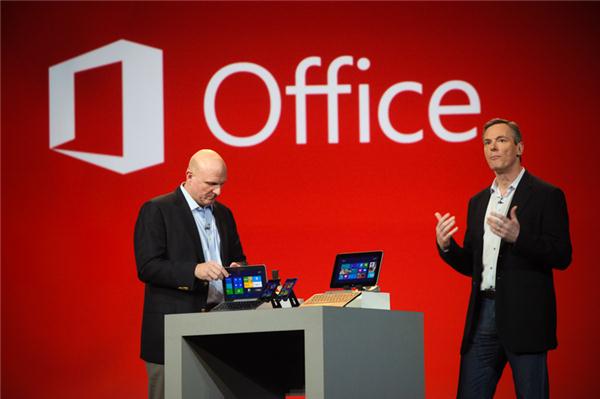
For the past dozen or so years, the coveted keynote speech at CES in Vegas has been the exclusive province of Microsoft CEO Steve Ballmer – and before that, former CEO Bill Gates. This year, however, that honor fell to Qualcomm’s CEO Paul Jacobs, whodisplayed the unprecedented processing power of the new Qualcomm Snapdragon 800 chips, but not without inviting Ballmer up on stage to share the spotlight.
To be fair, Ballmer was hardly the only special guest of the evening. Filmmaker Guillermo del Toro, NASCAR champion Brad Keselowski, and even Big Bird joined the party on stage, while Nobel Peace Prize winner Desmond Tutu joined in via video. But Ballmer’s remarks gave the greatest insight into the future of Windows computing, and the direction of the company.
As might be expected, Ballmer hyped Windows 8, Windows RT, and Windows phones. Yet interestingly, Ballmer seemed less focused on tablets as standalone devices, and more interested in the potential of hybrids and convertibles. Simply snapping a keyboard into a tablet, he said, instantly links together “tablets and computing, touch and keyboard… work and play.”
Indeed, as the only tablet manufacturer on the market with the power to bundle Microsoft Office with their tablets, Microsoft has good reason to emphasize the productivity potential that comes with hybrids. Ballmer’s vision seems centered around blurring the lines between entertainment center and work station. Consumers will be able to take the same tablet screen they’ve just been using to watch an Ultra HD movie, and – with the addition of a keyboard dock and peripherals – suddenly be “at work” in a matter of seconds.
In particular, Ballmer highlighted the convertible Dell XPS and the hybrid Samsung ATIV (not yet released), both Windows RT devices integrating Qualcomm’s Snapdragon processors. Ballmer also boasted about new apps soon to fill the tiles of Windows RT and Windows 8 alike, including apps by Expedia, Huffington Post, and CNN.
[Image via CNET]


